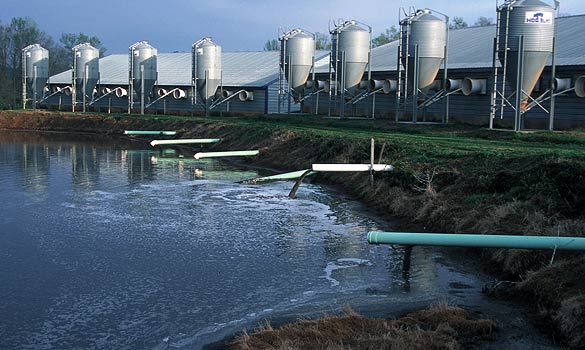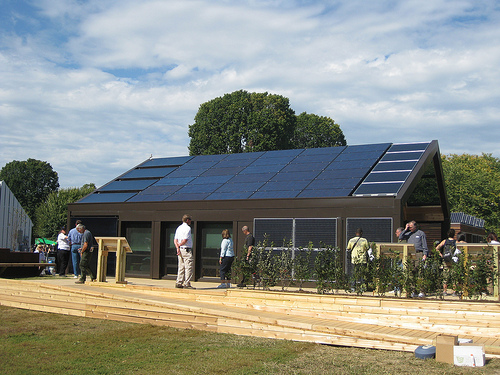
This house makes money for everyone except power companies and paint stores. (Photo by Future Atlas.)
Houses certified under various environmental standards are worth 9 percent more than the state average in California, according to new work by two economists.
Out of the 1.6-million-home-transaction sample, [the study’s authors] identified 4,321 dwellings that sold with Energy Star, LEED or GreenPoint Rated labels. They then ran statistical analyses to determine how much green labeling contributed to the selling price — eliminating all other factors contained in the real estate records, such as locational effects, school districts, crime rates, time period of sale, swimming pools and views. …
The 9% average price premium from green-rated homes is roughly in line with studies conducted in Europe, where energy-efficiency labeling on houses is far more commonplace. Homes rated “A” under the European Union‘s system commanded a 10% average premium in one study, while dwellings with poor ratings sold for substantial discounts.
In June, the median home price in California was $274,000, meaning that green certification increased the value of a house by almost $25,000.
And green investment isn’t only good for homeowners. It’s also good for the federal government [PDF].
[O]ver the life of solar assets, lease and PPA financing structures can deliver a nominal 10% internal rate of return (IRR) to the federal government on the federal investment tax credit (ITC) for residential and commercial solar projects.
Based on this analysis, a $10,500 residential solar credit can deliver a $22,882 nominal benefit to the government and a $300,000 commercial solar credit can create a $677,627 nominal benefit in lease and PPA scenarios over a 30-year period (the minimum expected life of the assets).
Translated into English: The government’s tax credit for the generation of solar power ends up making it around 10 percent on its investment. That return varies by state; it’s about twice as high in New York as in Arizona, for example. But the benefit is real, seen in the form of taxes on generated electricity.
Investing in green. Good for you; good for the government; bad for coal-fired power plants. Win. Win. Win.



